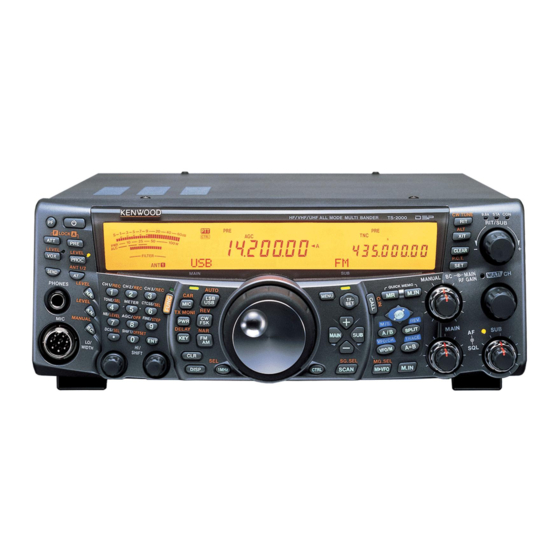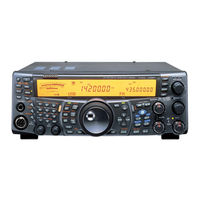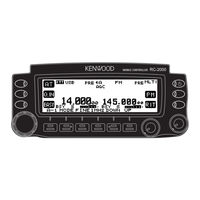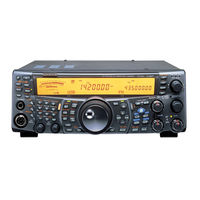
Kenwood TS-2000 Manuals
Manuals and User Guides for Kenwood TS-2000. We have 11 Kenwood TS-2000 manuals available for free PDF download: Service Manual, Instruction Manual, Service Manual Supplement, Specifications, Operation Procedure
Kenwood TS-2000 Instruction Manual (152 pages)
ALL MODE MULTI-BAND TRANSCEIVER
Brand: Kenwood
|
Category: Car Receiver
|
Size: 2.93 MB
Table of Contents
Advertisement
Kenwood TS-2000 Instruction Manual (152 pages)
Brand: Kenwood
|
Category: Transceiver
|
Size: 3.3 MB
Table of Contents
Kenwood TS-2000 Instruction Manual (109 pages)
ALL MODE MULTI-BAND TRANSCEIVER
Brand: Kenwood
|
Category: Transceiver
|
Size: 2.04 MB
Table of Contents
Advertisement
Kenwood TS-2000 Service Manual (171 pages)
ALL MODE MULTI-BAND TRANSCEIVER
Brand: Kenwood
|
Category: Transceiver
|
Size: 25.24 MB
Table of Contents
Kenwood TS-2000 Instruction Manual (60 pages)
Mobile Controller
Brand: Kenwood
|
Category: Transceiver
|
Size: 0.72 MB
Table of Contents
Kenwood TS-2000 Service Manual (99 pages)
ALL MODE MULTI-BAND
Brand: Kenwood
|
Category: Transceiver
|
Size: 11.93 MB
Table of Contents
Kenwood TS-2000 Service Manual (97 pages)
Brand: Kenwood
|
Category: Transceiver
|
Size: 18.57 MB
Table of Contents
Kenwood TS-2000 Service Manual Supplement (97 pages)
ALL MODE MULTI-BAND TRANSCEIVER
Brand: Kenwood
|
Category: Transceiver
|
Size: 18.47 MB
Table of Contents
Kenwood TS-2000 Service Manual (79 pages)
ALL MODE MULTI-BAND TRANSCEIVER
Brand: Kenwood
|
Category: Transceiver
|
Size: 3.8 MB
Table of Contents
Kenwood TS-2000 Specifications (10 pages)
All-Mode Multibander
Brand: Kenwood
|
Category: Transceiver
|
Size: 1.32 MB
Kenwood TS-2000 Operation Procedure (3 pages)
Adjustment mode
Brand: Kenwood
|
Category: Transceiver
|
Size: 0.02 MB
Advertisement










